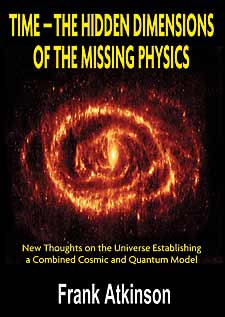Part V
The Speed of Light.
The next question to be resolved is how do we know that the speed of the light increases with time dilation and does not, as relativity dictates, stay at a constant speed? Why moreover, does it not go slower as would a clock? To resolve this we have to realize, that for light there are three relative constants to take into account. The first two are relative to dilations within the Tempo field time dimension. One is the constant that relates to the time of the source of the light. The other is the constant relative to the time of the observer of the light. However, importantly there is a third constant that relates to the internal time dimension of the light itself. Light, like all quantum wave energy, has to operate in its own time. It has to have its own time dimension.
We can postulate that light requires its own time dimension because it is well understood if a non-quantum object were to travel at the speed of light, it would have its time infinitely dilated. Such infinite time dilation would mean that for all practical purposes, such as those effecting change for the object, time would cease to exist. The importance of this statement is realized when we consider that change is crucial to the propagation of light, which is a quantum energy wave. Light is an electromagnetic wave and, consequently, has two constantly interchanging phases. It first has an electric phase that induces a magnetic phase, which in turn induces another electric phase, and so on. We know from Maxwell's equations that this interchanging takes place at a constant rate and does not slow down in what is, in our time dimension, dilated time. The light wave must be operating in its own exclusive time.
Given that light propagates at a constant rate within its own time dimension, it can be confidently stated that as a direct consequence, observers in dilated time see an increase in the frequency of the light. Because the wavelength of the light remains unaltered, the increase in frequency results in an increase in its speed. This is directly counter to special and general relativity.
One way of demonstrating special and general relativity to be flawed while showing the Tempo field theory to advantage, is by comparing the constants for gravity and the speed of light. Both these constants are of equal merit, with neither having precedence over the other. Yet for a moving body to be able to calculate the constant c for light, both time and distance have to be variables. On the other hand, these same variables are inapplicable for the same moving body to calculate the gravitational constant 'g'. The Tempo field theory has the advantage that the values for both remain constant relative to the time dilation of the body measuring them. The values for both constants will increase as the observer's time dilates.
Click here to read Part 6 of this Digest, on 'Time, Energy and Power'.

